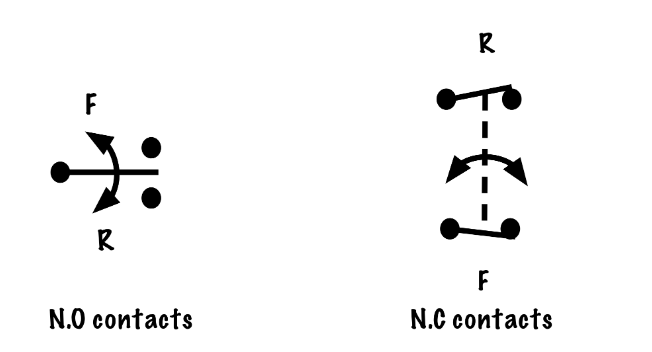A zero-speed switch, also called a plugging switch, is commonly connected, either directly or via a belt, to the shaft of the motor or the equipment that it drives and consists of a set of contacts that are activated by centrifugal force from the rotation of the shaft mechanism. The sets of contacts can come as either normally open or normally closed. Each set will change their state when subjected to shaft rotation.
Several symbols are used for zero-speed switch contacts, and the curved arrow represents the rotation of the motor to either open or close the contacts depending on their normal state.
The threshold of when these contacts open or close can be easily adjusted with a screw through the switch housing.
Since the slightest rotation can activate the switch contacts and introduce a hazard, some plugging switches are equipped with a special solenoid coil called a lockout relay. The lockout relay incorporates a mechanism to disable the contacts until the motor itself has been energized.
Zero-speed switches are used in circuits to provide either plugging action (momentarily reversing a motor to stop it) or anti-plugging action (preventing the reversal of a motor until it has come to a rest).
As a rule, a zero-speed switch with normally open contacts will provide plugging action, and a zero-speed switch with normally closed contacts will provide anti-plugging action.

Zero-speed switch contacts.
Reference
Basic Motor Control by Aaron Lee and Chad Flinn is used under a CC BY 4.0 Licence.